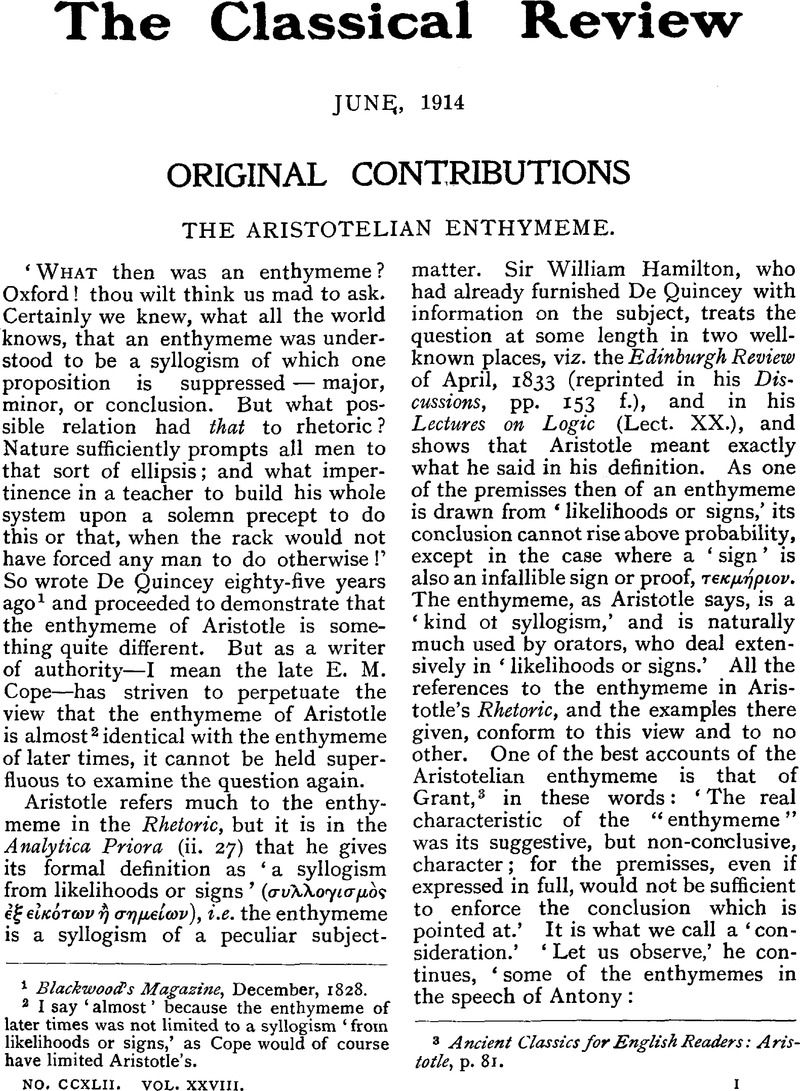Published online by Cambridge University Press: 27 October 2009

page 113 note 1 Blackwood's Magazine, December, 1828.
page 113 note 2 I say ‘almost’ because the enthymeme of later times was not limited to a syllogism ‘from likelihoods or signs,’ as Cope would of course have limited Aristotle's.
page 113 note 3 Ancient Classics for English Readers: Aristotle, p. 81.
page 114 note 1 Laws of Thought, pp. 247, 248.
page 114 note 2 Rhet., 1. 2. 14.
page 114 note 3 V. 10., §§ 1, 2.
page 114 note 4 E.g., Whately, Thomson, Jevons, Joseph.
page 114 note 5 Or, instead of one premiss, the conclusion may be suppressed.
page 114 note 6 Introduction to Aristotle's Rhetoric, p. 103 and note.
page 115 note 1 Logic, by R. F. Clarke, p. 357.
page 115 note 2 Rhet. i. 2. 18.
page 116 note 1 Classical Review, i., p. 98 f.
page 116 note 2 Anal. Post., i. 10. 7.
page 117 note 1 Cope, loc. cit., pp. 164, 165 ; Ar. Rhet. i. 2. 18.
page 117 note 2 Rhet. ad Alex., c. 10.
page 117 note 3 Topica, § 55. See Reid on pro Sulla, § 32.
page 118 note 1 V. 10. 1.
page 118 note 2 Ed. Vatic, i., p. 141.
page 118 note 3 Vol. ii., p. 289.
page 118 note 4 Mansel's Aldrich, Appendix F.